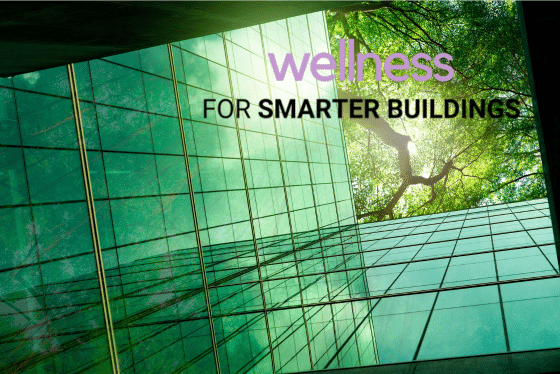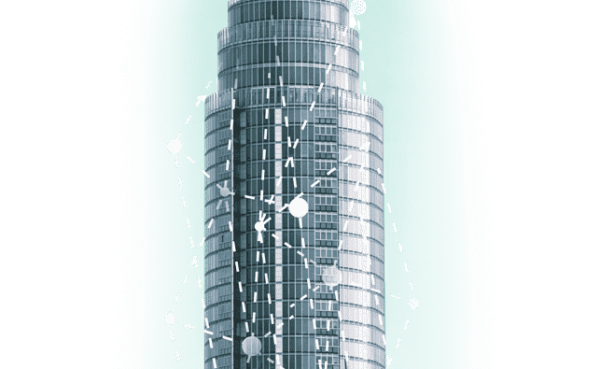Green building technology becomes essential as the designs for commercial workspaces change, driven by a stronger emphasis from companies on health, wellness and sustainability, creating environments where employees can thrive and businesses can flourish.

Shifting Priorities in Office Design
The most sought-after workspaces in today’s commercial environment prioritise the wellbeing of their occupants. Previously, desirable features included huge corner offices and convenient car parks. Now, there is a shift towards health and wellbeing in premium commercial spaces and a demand for green building technology to optimise building performance.
Impact of the Pandemic
The pandemic has popularised a hybrid working style, with employees splitting their time between home and the office. To support this working model and entice employees back to the office, modern workplaces need to be collaborative, flexible, and technology-driven.
Natural Elements in Office Spaces
Today’s commercial environments are designed to incorporate more natural elements typically found in a home, such as natural light, outdoor spaces, living plants, and ergonomic furniture. This shift aims to create a central design focused on health and wellness and supported by adaptive lighting and other green building technologies.
New Zealand’s Progress
Although New Zealand lags behind larger markets, it is gradually upgrading working environments due to the influence of large global corporations seeking premises in the country. These companies are mandated to meet wellness and sustainability baselines, demanding high building performance standards along with amenities like cafes, exercise areas, and community engagement strategies.
Building Performance Metrics
Common requirements now include visual displays of building performance metrics such as energy efficiency, air quality, and water/waste consumption. Independent building measures like NABERSNZ and Green Star ratings are quickly becoming standard and are likely to extend to other performance measures.
Using Metrics for Improvement
As these metrics become more accessible, the focus will shift to how companies use this information to improve, asking, “What can we do better?” and “What else can we do to support the wellbeing of our people?” Wellness metrics have evolved from a ‘nice to have’ to an expectation and are used by large corporations as part of their branding and recruitment strategies.
Economic Considerations
In a tighter economic environment, businesses recognize the importance of these metrics to their bottom line. When cost-cutting is necessary, they will opt for a smaller footprint rather than compromising on wellness and sustainability initiatives.
Bespoke Facilities in New Builds
For new builds, developers often collaborate directly with tenants to create bespoke facilities tailored to their needs. These facilities might include dedicated wellness spaces with fitness areas, showers, lockers, and smart green building technology solutions to monitor air quality, sound levels, and light intensity.
Adapting to Variable Office Occupancy
While many companies require employees to be in the office a certain number of days per week, they often do not specify which days. This results in near-full occupancy mid-week and almost empty offices on Mondays and Fridays. This variability makes it inefficient to have building services like lighting, heating, and ventilation running on fixed schedules. Facility managers need the ability to monitor building performance and adjust parameters easily based on daily occupancy variances. Crucially, these adjustments should be possible from ‘anywhere,’ preventing the facility manager from being the ‘sole occupant’ on a Friday morning just to make changes to building systems.
A Fully Integrated System to Improve Health and Wellbeing in Your Building
Zencontrol offers an evidence-based system for monitoring and measuring the performance of the building systems and features that impact health and wellbeing. A cloud-based analytics interface provides visualisations of the building’s performance, and can process large datasets, whilst providing optimal visualisations down to room level. The smart sensor range can be deployed on the lighting control network to provide a wide range of metrics to measure building performance such as:
- Air quality
- Light colour/intensity
- Occupancy
- Humidity
- Temperature
- Pressure
- Sound
A zencontrol system provides total coverage, integrating smart sensor reporting and control in the same cloud-connectable system that connects with the BMS, BACnet, Security, HVAC and AV.
Incorporating power analytics allows users to accurately understand and adjust how devices, rooms, floors and tenancies within the building are using power and provides a full range of building insights.
Even compliance testing of emergency systems and maintenance across multiple sites can be managed via the zencontrol cloud portal.
Conclusion
The future of commercial workspaces lies in their ability to promote health, wellbeing, and sustainability, making them attractive not just as places to work but as environments where employees can thrive.
Intelligent Environments are excited to be able to offer the green building technology these buildings require to optimise and adapt building systems to meet occupancy needs now, and in the future.
If you’d like more information please get in touch.


